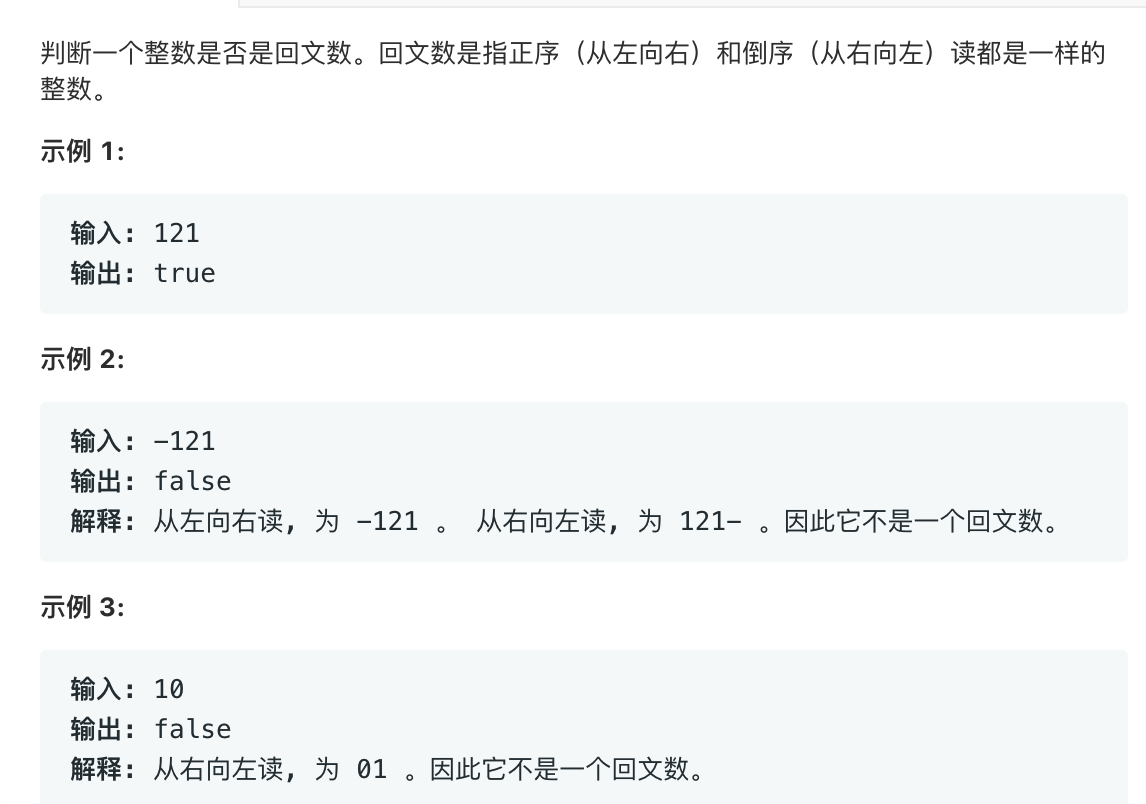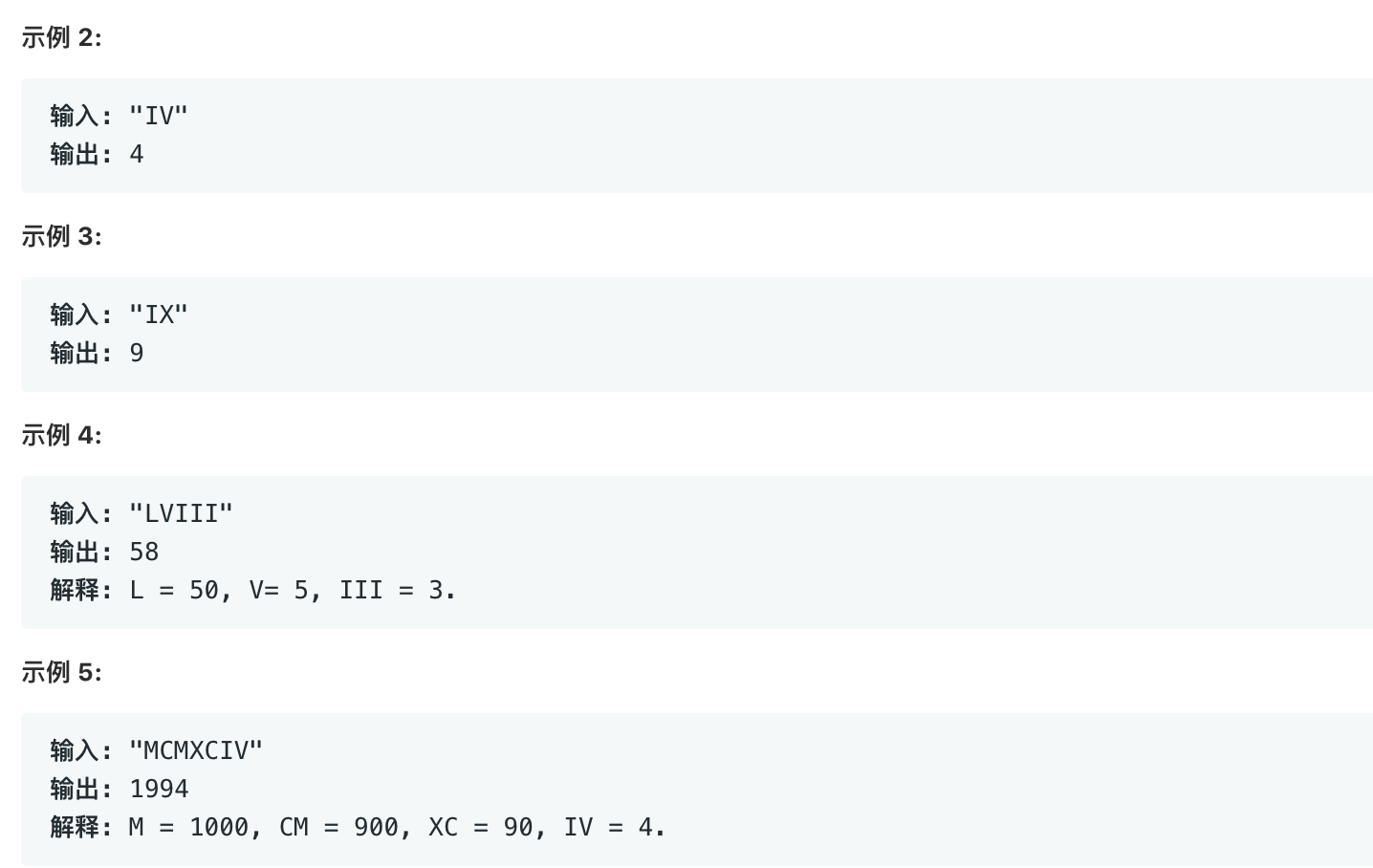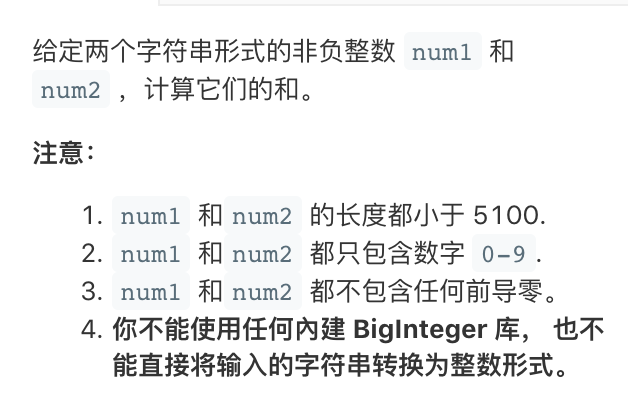给定一个整数数组 nums 和一个目标值 target,请你在该数组中找出和为目标值的 两个 整数。
你可以假设每种输入只会对应一个答案。但是,你不能重复利用这个数组中同样的元素。
示例:
给定 nums = [2, 7, 11, 15], target = 9 因为 nums[0] + nums[1] = 2 + 7 = 9 所以返回 [0, 1]
class Solution(object):
def twoSum(self, nums, target):
"""
:type nums: List[int]
:type target: int
:rtype: List[int]
"""
for m in range (len(nums)):
for n in range (m+1,len(nums)):
if nums[m]+nums[n]==target:
return [m,n]
def twoSum(nums, target):
"""
:type nums: List[int]
:type target: int
:rtype: List[int]
"""
d = {}
for i, item in enumerate(nums):
tmp = target - item
for key, value in d.items():
if value == tmp:
return [key, i]
d[i] = item
return None

class Solution: def isPalindrome(self, x: int) -> bool: if str(x)[::-1]==str(x): return True else: return False


class Solution:
def romanToInt(self, s: str) -> int:
roman_dic={'I':1, 'IV':3, 'V':5, 'IX':8, 'X':10, 'XL':30, 'L':50, 'XC':80, 'C':100, 'CD':300, 'D':500, 'CM':800, 'M':1000}
roman_sum=0
return sum(roman_dic.get(s[max(i - 1, 0):i + 1], roman_dic[n]) for i, n in enumerate(s))
#
# for i,n in enumerate(s):
# roman_sum+=roman_dic.get(s[max(i - 1, 0):i + 1], roman_dic[n])
# return roman_sum

class Solution:
def longestCommonPrefix(self, strs: List[str]) -> str:
res=""
for tmp in zip(*strs):
tmp_set=set(tmp)
if len(tmp_set)==1:
res+=tmp[0]
else:
break
return res

class Solution:
def addStrings(self, num1: str, num2: str) -> str:
add=0
res=""
new_num1=num1[::-1]
new_num2=num2[::-1]
if len(new_num1)>len(new_num2):
new_num2+="0"*(len(new_num1)-len(new_num2))
else:
new_num1+="0"*(len(new_num2)-len(new_num1))
n=max(len(new_num1),len(new_num2))
for i in range(n):
tmp=int(new_num1[i])+int(new_num2[i])+add
res+= str(tmp%10)
add=int(tmp/10)
if add!=0:
res+=str(add)
# 这里的if处理:当两个数相加为10或者100时,当最后一个add=1时,把进位打出来
return res[::-1]

思路:
我们可以对bits 数组从左到右扫描来判断最后一位是否为一比特字符。当扫描到第 i 位时,如果 bits[i]=1,那么说明这是一个两比特字符,将 i 的值增加 2。如果 bits[i]=0,那么说明这是一个一比特字符,将 i 的值增加 1。
如果 i 最终落在了 bits.length-1 的位置,那么说明最后一位一定是一比特字符。
class Solution:
def isOneBitCharacter(self, bits) -> bool:
i=0
if len(bits) == 1:
return True
while i<(len(bits)-1):
if bits[i]==0:
i+=1
elif bits[i]==1:
i+=2
if i==len(bits):
return False
else:
return True
